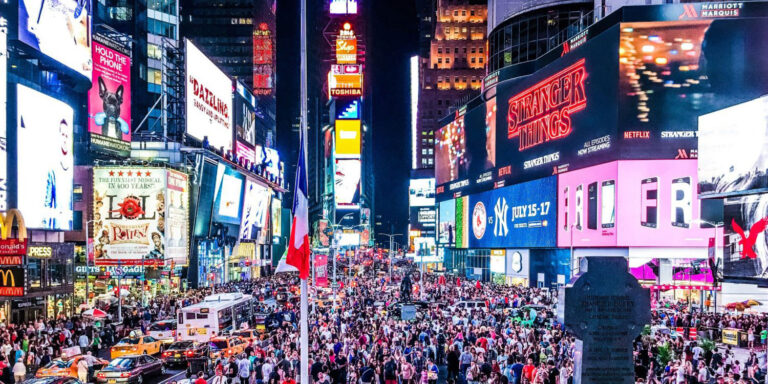After a whirlwind 2020, we’re nearing the end of the year, and the holiday season is finally upon us. It would be an understatement to say this year has had a significant impact on our way of life. The COVID-19 pandemic has made us adapt both our work and social behaviors which has, in turn, resulted in a dramatic surge in data consumption, placing an unprecedented strain on data centers.
All of these changes have meant that Christmas 2020 will be considerably far removed from our usual celebrations as we see a continuation of the trends that have emerged throughout year in relation to web traffic and data usage across online shopping, video calls, and much more.
Dasher, Dancer, and Prancer are going to have to take a back seat to switches, servers, and racks – data centers are going to be powering Santa’s sleigh this year…
Online Shopping
According to the Centre for Retail Research, online shopping accounted for 32.4% of Christmas retail sales in the UK in 2019, 26.4% in the U.S., 26.1% in Germany, and 20.3% in France – representing an average increase of 10.6% from the previous year.
If we take a look at 2020, we have already seen a further rise in online spending. Black Friday spending hit a new record with consumers shelling out $9.0 billion, an increase of 21.6% year over year (compared to $7.4 billion in 2019), according to Adobe Analytics data. U.S. consumers spent $6.3 million per minute shopping online on this day, or an average of $27.50 per person. Shopping via other devices also grew, $3.6 billion was spent via smartphones, a 25.3% increase year over year, accounting for 40% of the total online spend.
Adobe Analytics have predicted that total online sales this November and December will grow 33% year over year to a record $189 billion based on web transactions of 80 of the top 100 U.S. internet retailers.
With e-commerce growing by a third, this increased web traffic has a significant impact on data consumption and data center networks. Online retailers have ramped up for this year’s Christmas shopping rush. To allow them to cater to customers around the world, they are operating from multiple data centers across countries and regions, making them dependent on a variety of cloud-based applications and services.
Data center network infrastructure supports the entire customer journey, from data-driven marketing campaigns and online customer service, to SaaS (software-as-a-service) CRM solutions and even cloud-based shipping and supply chain systems. If a data center in the online retailer’s ecosystem experiences an outage, the potential ramifications are far-reaching and could result in not only disgruntled customers, but also significant losses.
After a challenging year, online shopping will make up a large proportion of online retailers’ annual sales and could even be critical to ensure their survival. This makes the data center networks that support this e-commerce equally as critical as operators look to ensure Santa visits every house this Christmas.
Video Calls
2020 has also seen a huge increase in video calling and video conferencing. Cloud-based video conferencing service, Zoom, released figures in October that suggest the platform has 300 million daily meeting participants, compared to just 10 million in December 2019. Microsoft Teams has also experienced a steep increase from 75 million daily active users in April 2020 to 115 million just 6 months later – an increase of 53%.
The restrictions put in place in an effort to stop the spread of COVID-19 may mean that we are not able to see our loved ones in person this Christmas so this increased number of video calls is set to continue as they may be our only option for some festive facetime.
Video calls with Santa Claus himself have also seen a surge in demand this month as parents adapt to a Christmas with a difference this year. As venues were forced cancel their traditional grottos, one online grotto reported an increase in bookings of more than 1000% this month.
Whether with friends, family, or Father Christmas, video calls will be essential in keeping us connected this Christmas, making the supporting data center infrastructure just as essential.
Gaming
COVID-19 guidelines may also mean that our annual, ever-so-slightly tense family game of Monopoly is postponed until next year. The pandemic-friendly alternative? Online gaming, of course!
The video game industry experienced a huge boost from the pandemic as people stayed home and gaming became an even more popular pastime. According to the NPD Group, total video game spending grew to $33.7 billion in the U.S during the first nine months of 2020 compared to US$27.9 billion for the same period in 2019.
Hollywood Reporter also revealed that gaming rose by 45% in the U.S, 38% in France, 29% in the UK, and 20% in Germany. Naturally, online gaming also increased, 29% of U.S. gamers surveyed said that they have been playing more with friends online since the pandemic began, a pattern echoed in the UK (17%) and France (12%).
This surge in online gaming and the associated data consumption has kept data centers very busy this past year and shows no signs of letting up, especially given the recent launch of the PS5 and Xbox Series X/S.
Video Streaming
If gaming isn’t your bag, another option for festive fun is getting together (either virtually or in person, where permitted) to watch a holiday movie or even TV series on Netflix, Amazon Prime, Hulu, Disney +, or a multitude of other streaming services.
The market for these services has grown by a staggering 37% in 2020 and Netflix added 26 million paid new subscribers in the first two quarters of the year alone, representing the company’s biggest growth spurt in history as we have turned to streaming movies and TV shows while staying home.
This uptick in video streaming has, as with online shopping, video calls, and gaming, turned the spotlight on data center networks as they have scaled their operations to meet bandwidth demands.
So, this year, when you sit down to watch Elf on Netflix Party with your family, open a present purchased on Amazon, attend a virtual Christmas party over Zoom, or play a game of Fortnite with your friends online, raise a glass of eggnog to data center networks who have made it possible.









